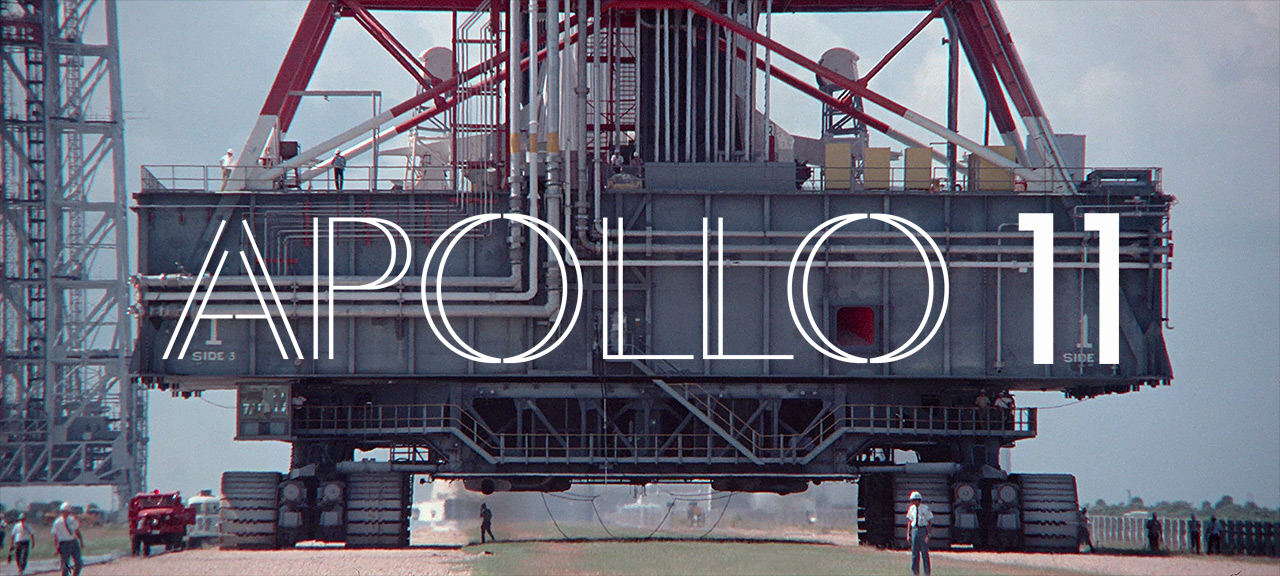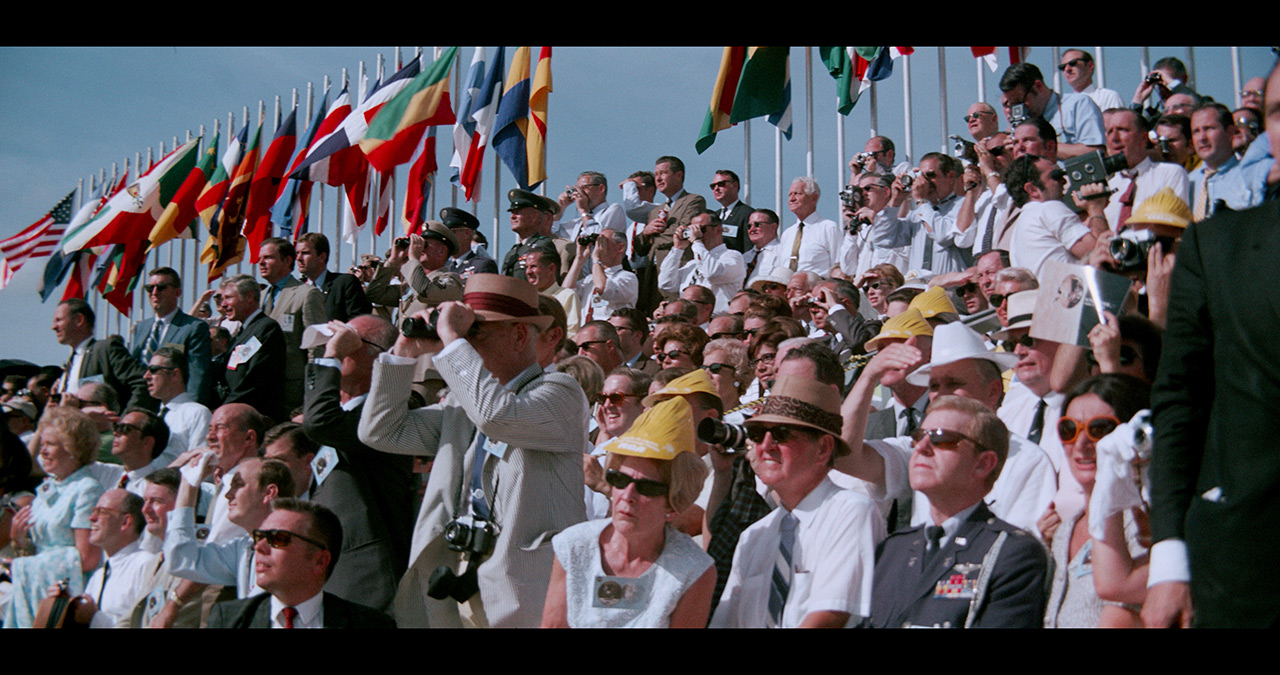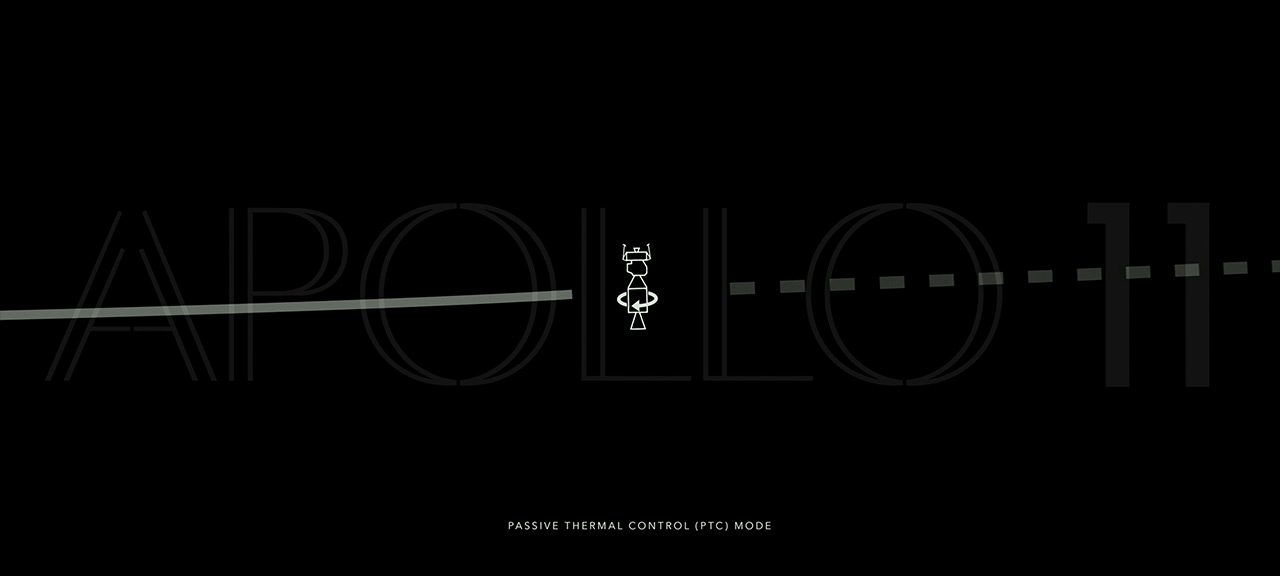Eleven Hidden Space History Details in New Documentary 'Apollo 11'

In the new documentary film "Apollo 11," audiences are treated to a sweeping view of the first moon landing mission, packed with both iconic and seldom-seen details.
The film features newly-discovered, large-format archival footage, which fills the movie screen — especially in IMAX, which on Friday (March 1) began an exclusive, one-week run of "Apollo 11" before it opens in theaters everywhere. Directed by Todd Douglas Miller, the NEON and CNN Films' documentary envelops viewers in the 50-year-old historic journey as if it was playing out today.
Absent of narration and interviews, "Apollo 11" lets its visuals and archival audio speak for itself. The result is an immersive experience that engages the general public and space history enthusiasts alike.
Related: With Vintage, Awe-Inspiring Footage, 'Apollo 11' Will Take You Back to the Moon
Here, for the benefit of all, are 11 details to look for when watching "Apollo 11."
1. Poster art
Even before entering a theater, moviegoers come across the poster for "Apollo 11" featuring the mission's Saturn V rocket standing on the launch pad.
Although it has been color-shifted for dramatic effect, the image of the towering booster previews the never-before-seen imagery that Miller and his production team, working with NASA and the National Archives, discovered in the making of the film. The art is a still from the previously-unseen 65mm large-format footage featured in "Apollo 11."
Get the Space.com Newsletter
Breaking space news, the latest updates on rocket launches, skywatching events and more!
2. 'Moonwalk One'
"Apollo 11" opens with a wide-angle view of NASA's crawler transporter slowly moving the Saturn V to the launch pad in May 1969, two months before the rocket's liftoff. The scene establishes the sheer scale of the spectacle to come.
It also provides a visual clue to the source of a good part of the footage.
"Moonwalk One," a 1970 documentary commissioned by NASA, also includes the scene, or more specifically, a part of it. Directed by Theo Kamecke, "Moonwalk One" was shot in 65mm, but the large-format film was ultimately cropped to match NASA's other, smaller frame source material.
Despite becoming a cult film, "Moonwalk One" only presented a partial view of the panoramic scenes its cinematographers captured. "Apollo 11" reveals their work in its full-frame glory and at 4K resolution.
3. Star sightings
Kamecke's cameramen literally turned their backs on the Apollo 11 launch to film the public, press and VIPs reacting to the liftoff. "Apollo 11" includes this footage, which captured among the crowd several familiar faces.
Watch the viewing stands to possibly spot Johnny Carson and his "The Tonight Show" sidekick Ed McMahon, comedian Jack Benny, science fiction author Issac Asimov, President Lyndon B. Johnson and Vice President Spiro Agnew.

4. Moog music
Underscoring the archival material in "Apollo 11" is composer Matt Morton's era-appropriate score. The music reaches its first crescendo as the Saturn V climbs towards space, dropping spent stages along the way.
Every instrument and effect used in Morton's score existed at the time of Apollo 11 in 1969, including the Moog modular Synthesizer IIIc, the Binson Echorec 2 (tube echo), the Mellotron (early keyboard sampler used by The Beatles, Led Zeppelin and more) and the orchestra.
5. Passive position
Without narration (other than NASA's mission commentators), "Apollo 11" relies on chyrons and periodic, period-style animations to explain what is about to unfold on screen.
Most of these simple graphics were easy to plan, but then came "passive thermal control," also known as "barbecue mode" (at about 35 minutes into the film). To avoid overheating any one side of the spacecraft, the docked command, service and lunar modules were put into a slow roll.

But which way was the spacecraft pointed for the maneuver and which direction was it rotating? To find the answer, the filmmakers turned to NASA chief historian Bill Barry and his staff at the space agency's headquarters in Washington, DC.
After researching the topic, the historians found that Neil Armstrong, Buzz Aldrin and Michael Collins were traveling sideways (in relation to their direction of travel), with the command module's nose pointed "up" toward celestial north (on the way to the moon; on the way home, they were nose down).
6. Sketching history
Shortly after the passive thermal control animation plays, the film turns the focus back on Mission Control in Houston. In between shots of the flight controllers (including flight director Gene Kranz and capcom Charlie Duke), there is a scene of someone sketching the people in the room.
The artist is not identified on screen, but that is Franklin McMahon, who as a member of NASA's Art Program was invited into Mission Control to capture the history as it unfolded. (Other artists present for parts of the Apollo 11 mission included Robert McCall and Paul Calle.)
7. Set the tone
As Armstrong and Aldrin descended to the moon, they encountered a series of alarms indicating an issue with their on board computer. Hollywood dramatizations have portrayed these alerts blaring in the cabin.
In reality, the tone was heard by the astronauts in their earpieces, which means it was not recorded as part of the cabin audio.
For "Apollo 11," the filmmakers sourced NASA documents describing the technical details behind the tone and reproduced it in the studio.
8. 30-track
Other than the tone, the only other sound in the astronauts' ears was the voice of the capcom (capsule communicator), who relayed directions from Mission Control. It was capcom Charlie Duke who gave Armstrong and Aldrin the "go" to proceed, despite the computer alarms.
Duke was conveying the word of flight director Gene Kranz and guidance officer Steve Bales, who were seated near Duke in the front room of Mission Control. Bales, in turn, had quickly consulted with his back room specialist, Jack Garman, whose knowledge of the "1202" and "1201" alarms allowed the moon landing to continue.
"Apollo 11" captures these tiered discussions like no film before it thanks to the release by NASA of what is called the "30 track" — more than 11,000 hours of previously unheard audio that encompasses the input from 60 members of the Mission Control team. The "30 track" audio is used throughout the documentary.
Related: NASA Launches Massive Digital Library for Space Video, Photos & Audio
9. First view
After touching down at Tranquility Base, but before stepping out onto the surface, Armstrong and Aldrin got their first view of the lunar surface through the forward facing windows of their lunar module "Eagle." They also documented that vista in a series of photographs.
To reproduce the experience of seeing the moon for the first time, Miller and his production team used high-resolution scans of those photos to piece together the panorama seen in the film.
10. Mother Country
"Apollo 11" producer Thomas Petersen was listening to the mission's space-to-ground audio when he caught sound of what he thought was a snippet of music from one of the astronaut's personal cassettes. The tune was faint and he could not immediately make it out. Listening to it several times more, he was able to make out just enough of the lyrics to identify the track.
"What ever happened to those faces in the old photographs?"
"Mother Country" by John Stewart captured a note of nostalgia that Peterson and Miller knew they wanted in the film. They traveled to meet with Stewart's widow, who, after seeing an early test of the footage, agreed to the song's use in "Apollo 11." Just as it did on board the mission, "Mother Country" plays as the astronauts' make their triumphant return to Earth.
11. Credits
As "Apollo 11" comes to its close, the first of two dedications appears on screen: "For Al and Theo."
The latter is a nod to "Moonwalk One" director Theo Kamecke, without whom the trove of 65mm footage would not exist. The earlier is a reference to Al Reinert, whose 1989 documentary "For All Mankind" was an inspiration to the "Apollo 11" filmmakers. Both Kamecke and Reinert died while "Apollo 11" was being made.
Their dedication is followed by a long list of names — the members of the Apollo 11 mission team — filling the screen. As the filmmakers' second dedication notes, the documentary is for "the thousands of NASA staff, contractors and volunteers of Project Apollo."
Watch the IMAX trailer and see more details from Todd Douglas Miller's new documentary "Apollo 11" at collectSPACE.
Disclosure: The author of this article, collectSPACE.com's editor Robert Pearlman, served as the historical consultant on "Apollo 11."
Follow collectSPACE.com on Facebook and on Twitter at @collectSPACE. Copyright 2019 collectSPACE.com. All rights reserved.
Join our Space Forums to keep talking space on the latest missions, night sky and more! And if you have a news tip, correction or comment, let us know at: community@space.com.

Robert Pearlman is a space historian, journalist and the founder and editor of collectSPACE.com, a daily news publication and community devoted to space history with a particular focus on how and where space exploration intersects with pop culture. Pearlman is also a contributing writer for Space.com and co-author of "Space Stations: The Art, Science, and Reality of Working in Space” published by Smithsonian Books in 2018.In 2009, he was inducted into the U.S. Space Camp Hall of Fame in Huntsville, Alabama. In 2021, he was honored by the American Astronautical Society with the Ordway Award for Sustained Excellence in Spaceflight History. In 2023, the National Space Club Florida Committee recognized Pearlman with the Kolcum News and Communications Award for excellence in telling the space story along the Space Coast and throughout the world.

